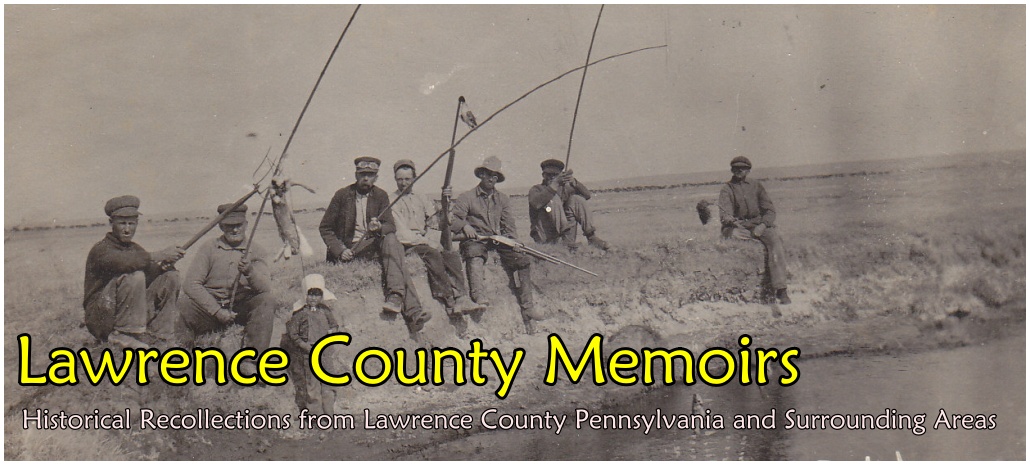The small settlement of Newport, just north of Wampum in what later (in 1849) became Lawrence County, Pennsylvania, was laid out by Joseph Coon in about 1833. The village, resting along the west bank of the Beaver River, slowly grew over the years. To access the eastern bank of the Beaver River residents of Newport had to utilize a crossing in the upper reaches of the town known as Van Emmen’s Ferry or the bridge in nearby Wampum built in 1867.
In the early 1890’s the residents of Newport petitioned to have a bridge of their own erected. County officials approved the measure in 1891 but the Pittsburgh & Lake Erie Railroad (P&LE), whose double tracks ran along the river in Newport, opposed such a bridge. P&LE officials said such a bridge would empty out at the foot of their tracks and create a hazardous situation similar to the one already in existence in Wampum where fast-moving trains and pedestrians were both at danger. The bridge issue was put on the back burner for the time being.
Finally, in January 1899, Lawrence County officials moved forward and entered into a contract with the Pittsburg Bridge Company to erect the long-stalled span at Newport. The cost would total $9,600 plus additional expenses for masonry and cement work. On July 14, 1899, while preliminary work was underway, the P&LE was able to successfully file an injunction to stop the work. Both sides presented their cases during a court hearing on September 18, 1899, and as a result the injunction was dissolved. The next few months featured a heated back and forth legal battle as work resumed on the bridge. The 312-foot-long and 16-foot-wide bridge was completed by June 1900 and county officials inspected and signed off on it the following month. The bridge was up but connecting roads had yet to be constructed on either end.
The P&LE continued their fight and in June 1901 the Supreme Court of Pennsylvania ruled that Lawrence County officials had unlawfully erected the bridge without the proper approval. The legal battle continued and eventually I believe the county tried to recoup some of its losses by going after its own county commissioners involved in the approval and construction of the bridge. A long legal snafu ensued and was still being contested in the courts in 1915-16. The legal troubles and money squabbles were slowly solved. The bridge was never opened to traffic and at some point – to further illustrate the ridiculousness of the situation – was simply torn down and scrapped.
 The Newport Bridge, little known to folks these days, was the source of much controversy when it was under construction back in 1899-1900. The P&LE, whose tracks are visible at the foot of the span, vigorously fought the county to prevent construction of this bridge. They said the crossing endangered their trains and any people that would be using the bridge. Obviously this bridge was built, but as a result of successful legal action by the P&LE it was never opened for public travel – and was later torn down. (c1900) Full Size |




Comments
There are currently no comments on this article.
Comment